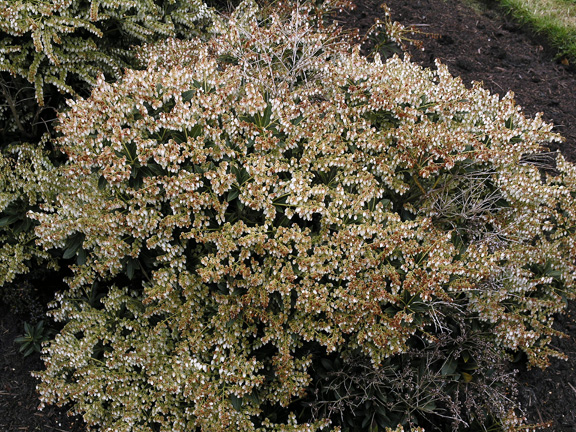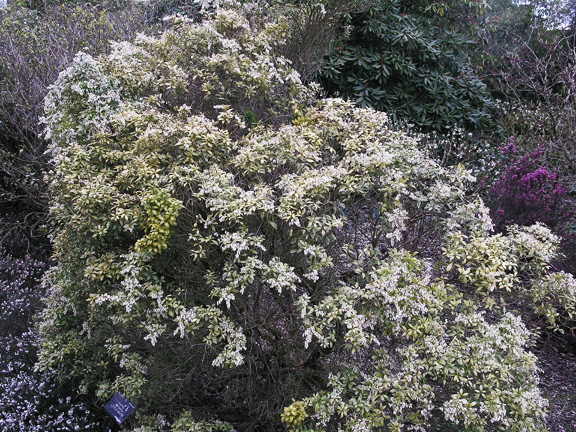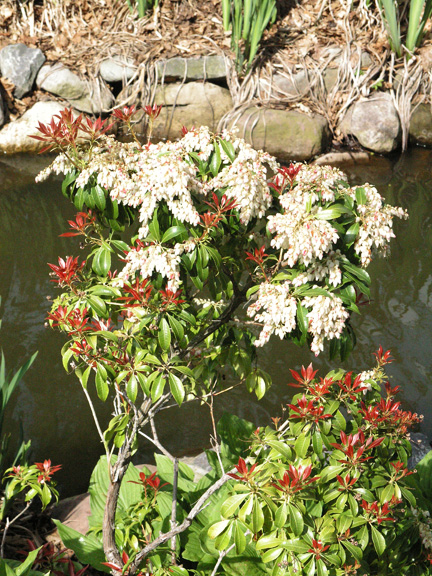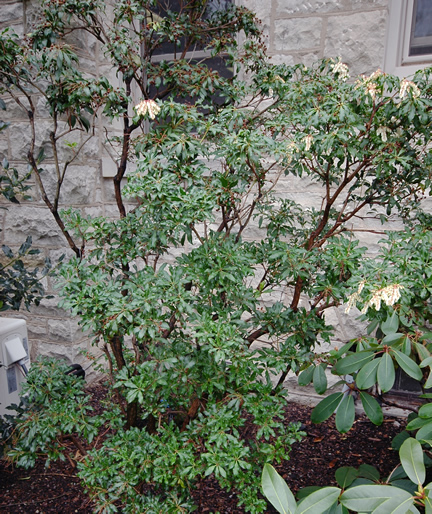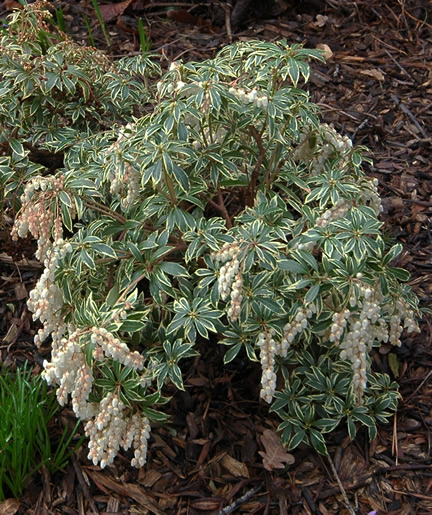| General Description | Fairly large, flowering, broadleaf evergreen shrub. New growth is red, maturing to a glossy, deep green. Flower buds appear in autumn, and stay the winter until they bloom the next spring. |
| ID Characteristic | New leaves emerge red/bronze, but turn green as they mature. Produces many panicles of flowers in early April, which last 2-3 weeks. |
| Shape | Dense, multi-stemmed, loosely rounded shape. |
| Landscape | Excellent evergreen plant, flowers early, and is beautiful when in flower. New growth is a nice red colour. Requires rich, moist, acidic soil, as well as part to full shade, to use as an understory shrub. Requires winter protection if grown in an exposed situation. |
| Propagation | Can be grown from cuttings or seeds, which require no pre-treatment. Cuttings must be taken in August or September, and put under intermittent mist, with bottom heat of 17-21°C. |
| Cultivation | Requires moist, rich, acidic soil and part shade. Needs winter protection in exposed situations, fertilize with a product for plants in acidic soil. |
| Pests | Chlorosis due to neutral or alkaline soils is a problem, but can be fixed. Lace bugs maybe a problem in some areas. |
| Notable Specimens | The Niagara Parks Botanical Gardens, Niagara Falls, Ontario, Canada. |
| Habitat | Native to Japan, Taiwan and China, grows in moist, rich, acidic soils, in partial shade. |
| Bark/Stem Description | Bark is gray-brown in colour and slightly furrowed, but has little aesthetic value. |
| Flower/Leaf Bud Description | Flower buds form in late summer or early autumn, are green to red in colour, persist through the winter and provide some winter attraction. The Buds are small, 1-1.5cm long, and not as wide. The 5 sepals per bud fit into grooves on the unopened petals |
| Leaf Description | Alternate, 2-4cm wide by 6-10cm long. Obovate-oblong in shape, with petioles less than 1cm. New leaves emerge bronze-red, turning to dark green as they mature. |
| Flower Description | Small, white, pendulous flowers grouped in panicles 10-15 cm long. Individual flowers are no more than 1cm long or wide, and are urn-like in appearance. |
| Fruit Description | Brown capsules, less than 1cm that persist through the winter, ornamentally insignificant. |
| Colour Description | New growth is reddish, turning to dark green. Flowers are white. |
| Texture Description | Medium, fairly fine foliage, mature specimens can appear quite dense, with a haystack like appearance. |
